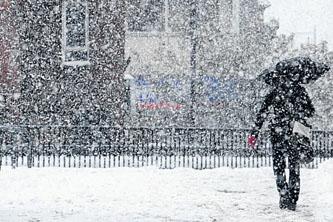
© This Is LincolnshireMini ice age.
Snow and ice gripping the county is nothing compared to the mini-ice age heading our way, according to a county astronomer.
Philip Norton, a member of Lincoln Astronomical Society, forecast the current harsh winter conditions way back in the 1980s.
He also correctly forecast the weather this time around and last winter.
But he says this is comparatively mild - with far harsher winters to come in the 2020s.Mr Norton, a development engineer of Thirsk Drive, North Hykeham, bases his predictions on sunspot activity.
Sunspots are visible as dark spots on the surface of the sun, where the magnetic fields from within have risen and broken through its surface.
When there are lots of sunspots, there are fewer clouds on Earth.
If there is a lack of sunspot activity, the Earth gets cloudy, lowering temperatures.
Mr Norton said: "This winter is mild compared to those of the 2020s."
"The sunspot activity is roughly following a 400-year trend.
"I predicted the last sunspot cycle would be the most active for a long time and it was.
"This would be followed by a long, deep solar minimum. We are just getting out of this.
"The next sunspot cycle, which has just started, would be only half as active as the last.
"We then enter a period without sunspots for decades, starting in about 2020.
"I didn't think we'd have this much snow in November - I thought it come just after Christmas.
"My worry is high pressure from Iceland, which this year will bring the wind from the north."
Met Office spokesman Sarah Holland said the organisation had "nothing to say" on such long-range predictions.
Jonathan Powell, senior weather forecaster with Wales firm Positive Weather Solutions, said there was short-term good news.
He said: "Our modelling still suggests a cold scenario in January and February - not as cold as last year - but still some quite severe snow and temperature activity.
"I would also suggest, from current modelling, a truncated winter, with mid-to-late February offering little resistance to the onset of milder conditions, which will eventually herald the early arrival of a warm spring."

Reader Comments
Highly recommended book for those who still think we're headed toward "Global Warming".
wrong.
forget ice age by 2020 - ice age is here, now.